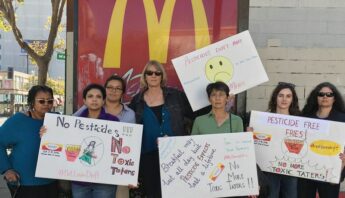Right now, the very existence of the U.S. Environmental Protection Agency (EPA) is being challenged by the people who are in charge of it, and by legislators who see it as a job-killing nuisance. Instead of tearing it down, let’s focus on its mission — protecting our health and the natural environment — and make sure that it’s helping those who need it most.
Right now, the very existence of the U.S. Environmental Protection Agency (EPA) is being challenged by the people who are in charge of it, and by legislators who see it as a job-killing nuisance. Instead of tearing it down, let’s focus on its mission — protecting our health and the natural environment — and make sure that it’s helping those who need it most.
The founding purpose
In 1970, various federal anti-pollution efforts were merged to become the EPA in response to President Nixon’s pledge “to repair the damage already done, and to establish new criteria to guide us in the future.”
The famous Ash Council memo, which proposed an Environmental Protection Agency, warned that:
. . . sound environmental administration must reconcile divergent interests and serve the total public constituency. It must appreciate and take fully into account competing social and economic claims.
The initiators of the agency recognized the private sector as a key stakeholder — but one of many in fulfilling the new agency’s mission “to protect human health and the environment.” The founding administrator, staunch Republican William Ruckelshaus, later said,
At EPA, you work for a cause that is beyond self-interest and larger than the goals people normally pursue.”
So it’s remarkable — and disturbing — to read in the agency’s own press release last month that “American leaders and job creators all across the country today cheered as Scott Pruitt was confirmed by the the U.S. Senate to become the new EPA Administrator.”
Huh? Who else was cheering this appointment? What about leaders of environmental organizations, medical societies and scientific research bodies? What about leaders of communities dealing with toxic SuperFund sites, or who have used the Clean Air Act and the Clean Water Act to push reluctant state officials to take action? When did the EPA shift its mandate and become the JPA (Jobs Protection Agency)?
Drumming up fear
The president recently said,
I want regulations because I want safety, I want all environmental situations to be properly taken care of. It’s very important to me. But you don’t need four or five or six regulations to take care of the same thing.”
The EPA he inherited was a relatively small agency whose programs are more involved in supporting states and communities than in regulating. This mantra that regulatory overreach is harming the economy is one of those false narratives that’s been repeated so often by ideologues that too many people accept it as fact. Studies from the NYU Law School and others found no statistical evidence linking regulations to “killing” jobs.
The current administration is using people’s fears of unemployment to advance an agenda that values short-term profits over those larger goals that Bill Ruckelshaus was inspired by.
Undercutting communities for corporate profit
The EPA has been an important, if at times reluctant, ally in communities that must be invisible to presidential advisor Myron Ebell, who back in January told an audience in London that the environmental movement “is the greatest threat to freedom and prosperity in the modern world.”
The EPA’s common-sense embrace of climate change and environmental justice are as much behind the partisan attempts to destroy it as is the notion that the U.S. economy would be better off without it. Elevating the voices of already powerful industries like agrichemicals and fossil fuels in the White House will totally drown out the perspectives of the people whose lives are being harmed today by the choices those industries have made.
People in low-income communities, and in rural America, rely on the EPA to level the playing field somewhat when multinationals like Monsanto and Dow are ignoring their interests. The EPA’s adoption of the “disproportionate impact” lens, embedded throughout the agency — and its now-closed Office of Environmental Justice — mandated that equity and rights were fundamental issues to address in every agency action. Shutting down (or gutting) the EPA is meant to eliminate speedbumps on the highway to increased corporate profits.
So don’t believe the hype! PAN has been a vocal critic of the EPA since our founding in 1982. We’ve invested decades of advocacy and litigation in pushing the EPA to do more, not less, as it manages competing interests in shifting political winds. But I can’t imagine what our country would be like without an EPA at all. The agency was central to improving air and water quality everywhere.
Decades ago, it put a stop to the use of dangerous pesticides like DDT, endosulfan and chlordane. There is still much more work to do. As my colleague Kristin Schafer pointed out in a recent blog:
scientific evidence linking exposure to pesticides and other chemicals with human health and environmental harm is stronger than ever before, and communities across the country are in harm’s way. Neighborhoods whose environmental problems were routinely ignored by local governments are still leveraging EPA standards and scrutiny to force local action.”
Tearing down the agency charged with protecting the environment is an anti-democratic move, intended to shut out the workers, health professionals, academics and concerned citizens who want the EPA to do its job. A strong and effective EPA and related agencies is critical for communities who struggled to be heard even under Democratic administrations. The EPA hasn’t been perfect, but let’s fight like hell to keep it — and to make it accountable to everyone, not just to the so-called “job-creators.”








